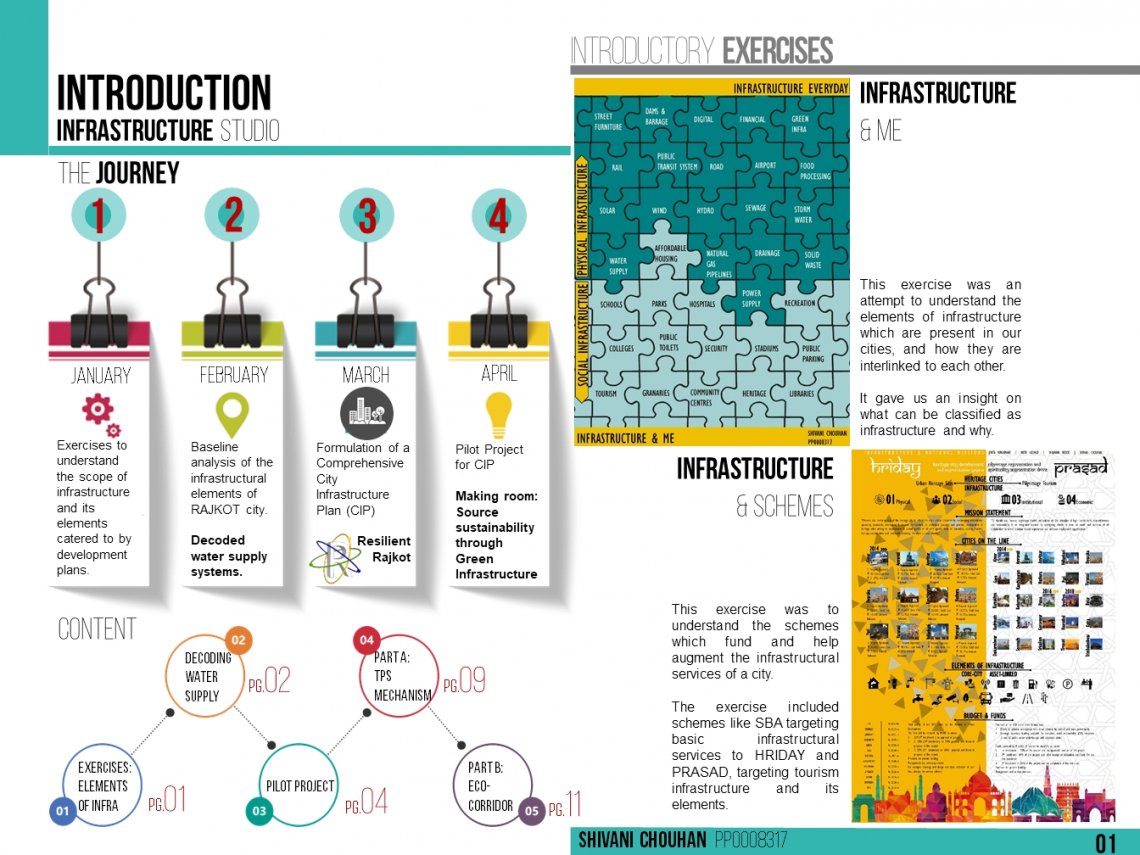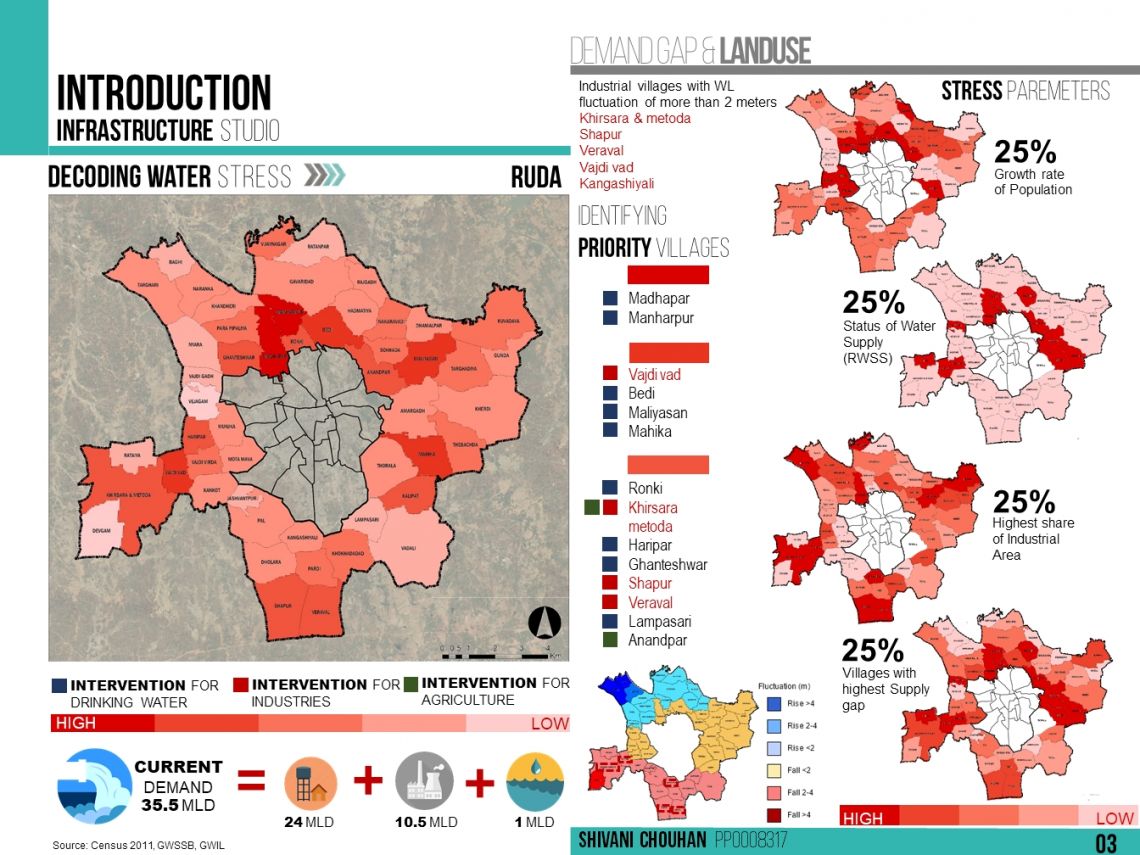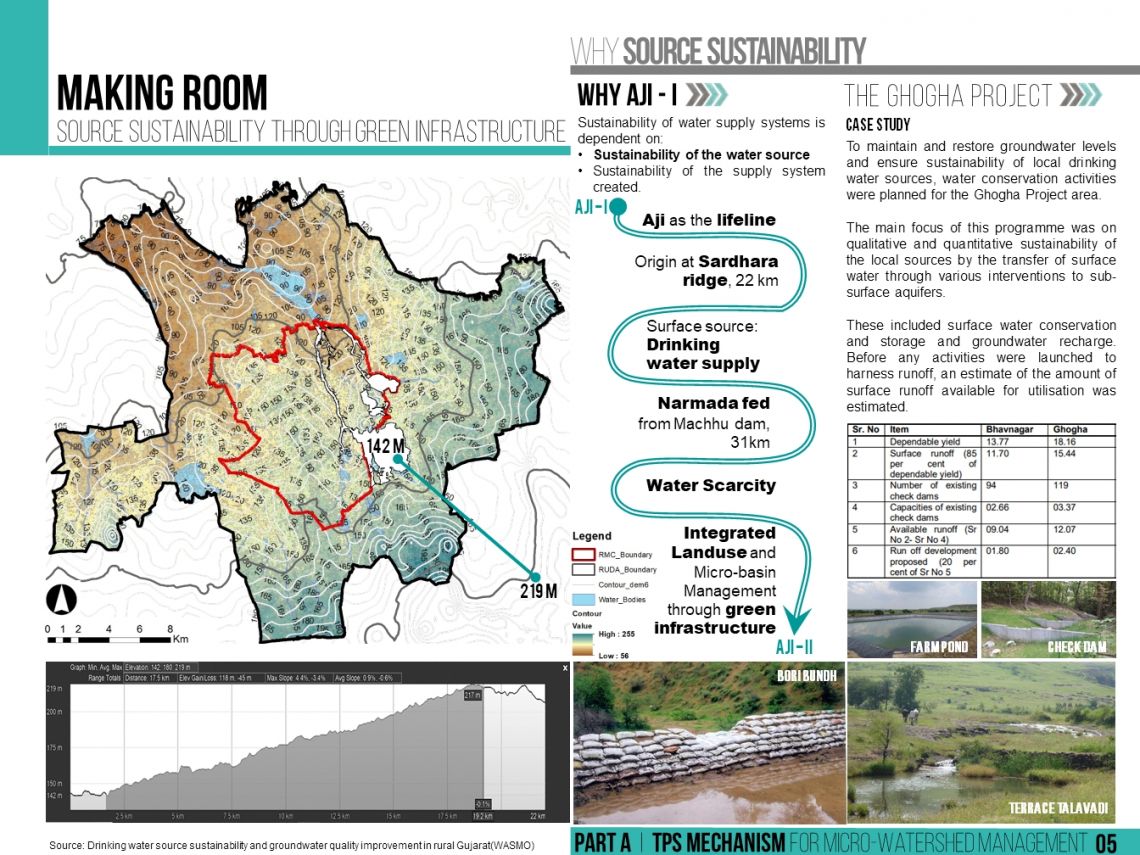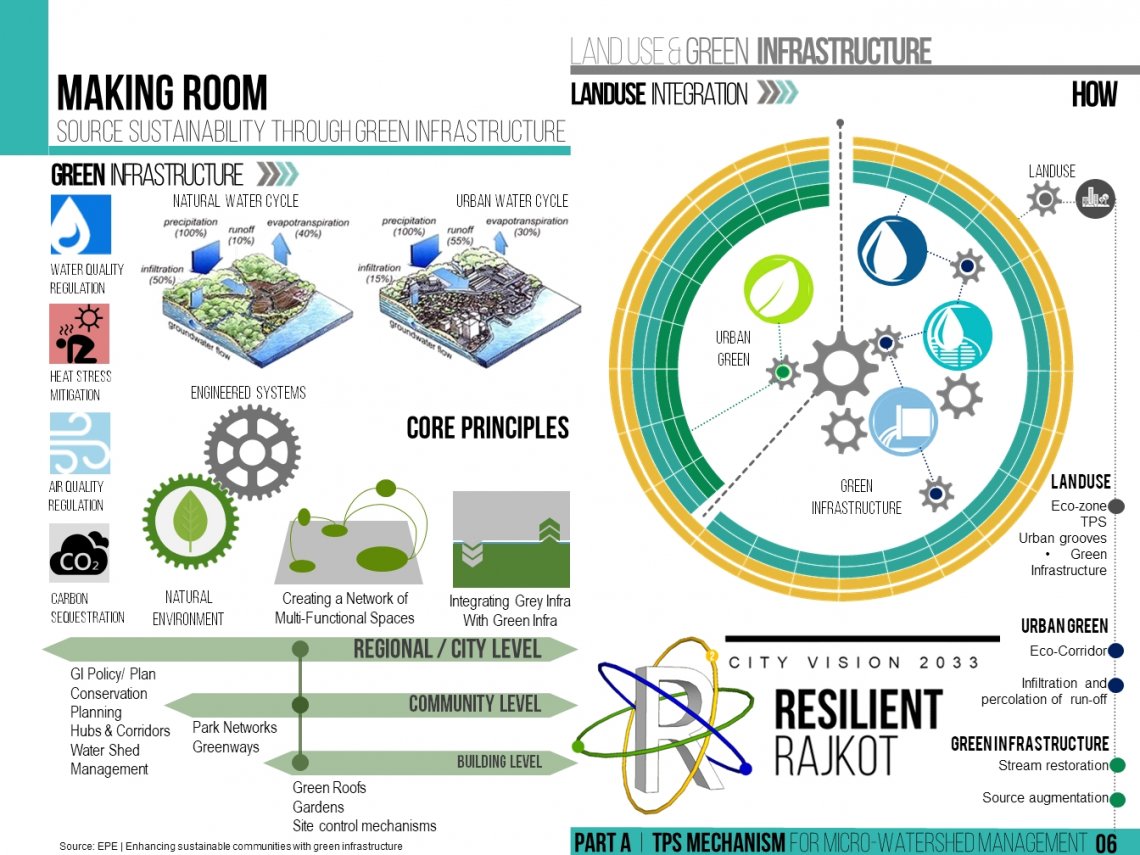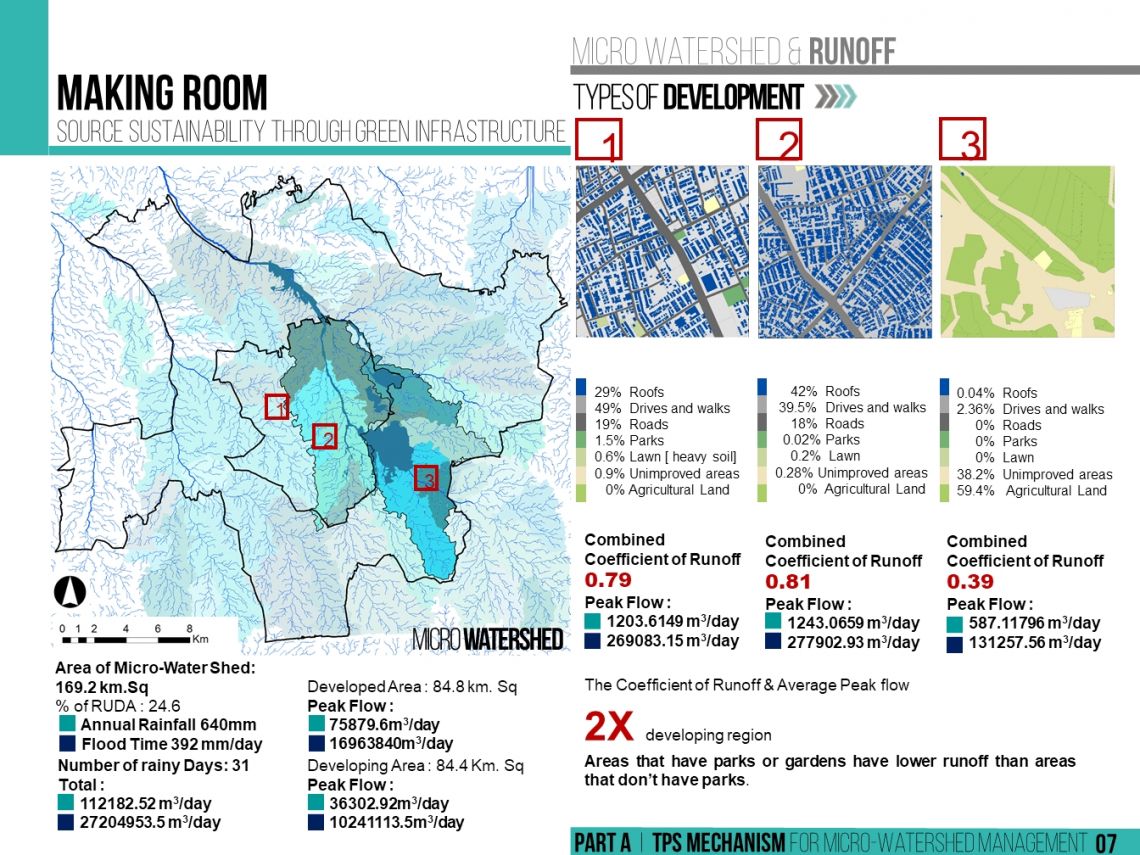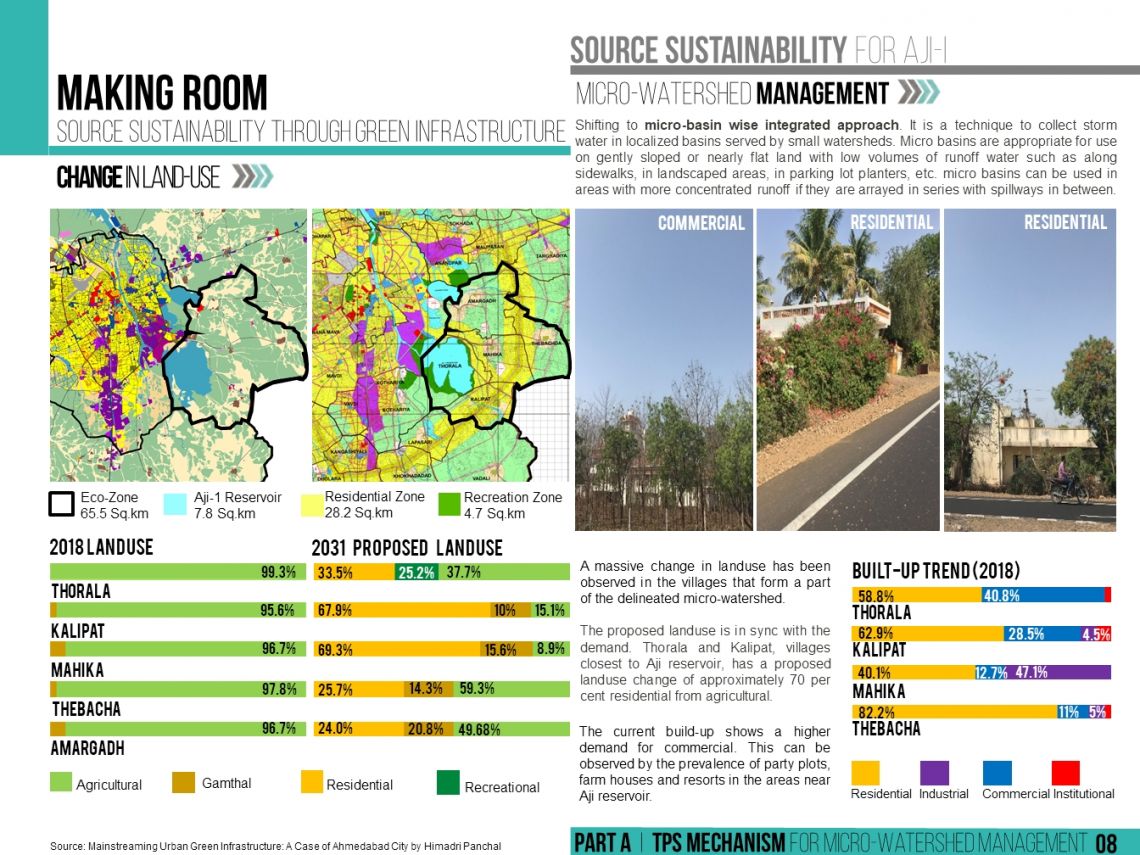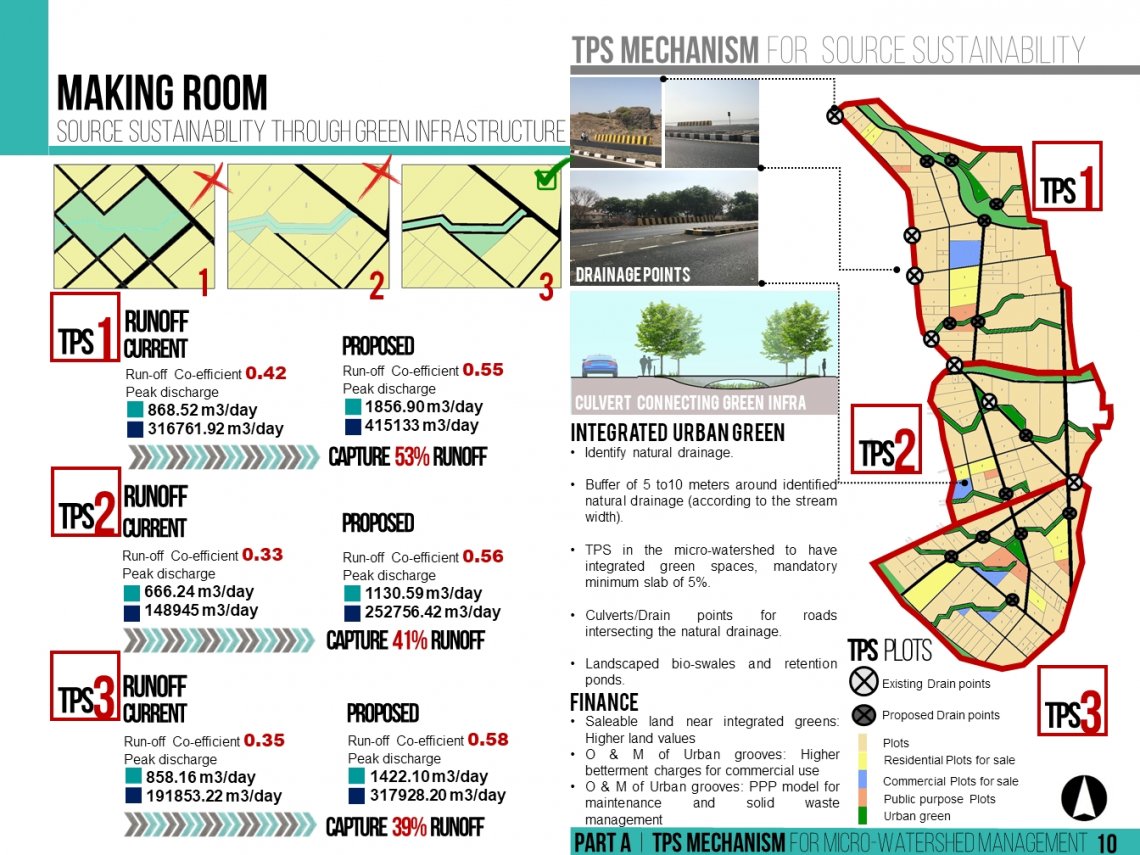Your browser is out-of-date!
For a richer surfing experience on our website, please update your browser. Update my browser now!
For a richer surfing experience on our website, please update your browser. Update my browser now!
Part A: TPS Mechanism for micro-watershed management
Source sustainability through Green Infrastructure by conjunctive use of rainwater and surface water, and through integration of Landuse with Infrastructure.
The project advocates shifting to micro-basin wise integrated approach, which is a technique to collect storm water in localized basins served by small watersheds and bridging the disconnect through appropriate planning exercise.
